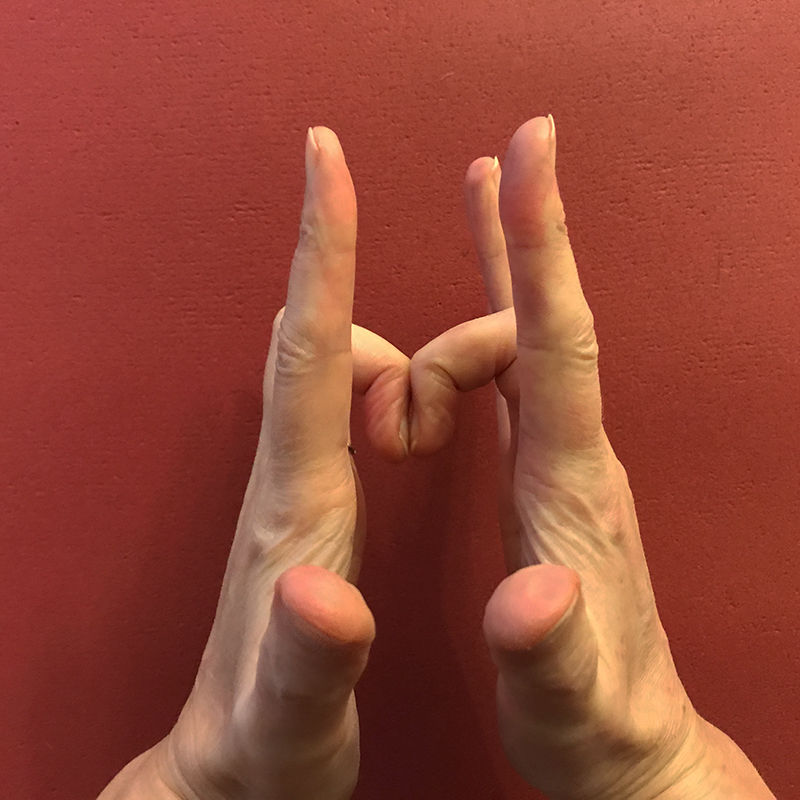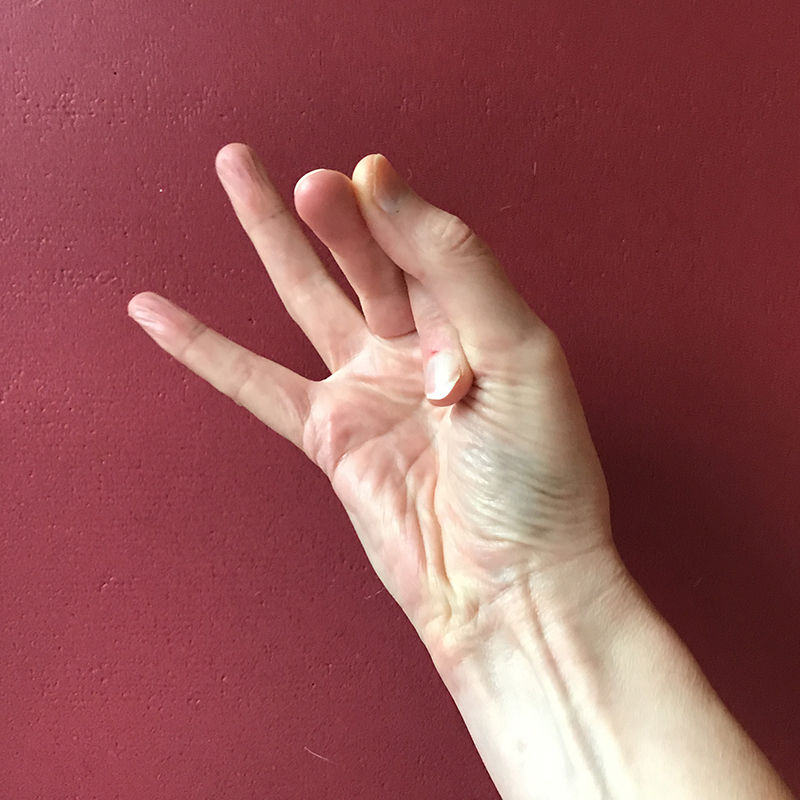One fascinating aspect of yoga and meditation practices is the use of mudras or hand gestures to help channel energy and influence the body's wellbeing. Holding a mudra can bring a powerful and profound steadiness and focus to your practice. You can even control the flow of your breath through mudras.

Photo by Bharath Reddy
Impact of mudras on respiratory health
Research published in the Indian Journal of Clinical Anatomy and Physiology found that lung specific mudras could improve the respiratory function in asthma patients when practiced along with focused breathing.
The hand and finger positions of mudras make important connections in the nervous system and stimulate specific energy pathways or nadis.
Mudras can also increase energy and blood circulation to different parts of the brain, to important nerve junctions and glands. Early yogis mapped out the hand areas and their associated reflexes which relate to the different areas of the body and brain.
In Traditional Chinese Medicine, Autumn is the season of dryness, contraction and moving inward, and it corresponds to the lungs and large intestine. During this season, our lungs are more susceptible to respiratory pathogens and they need more support to weather this seasonal change.
If your lungs start to feel “under the weather”, use this tried and tested mudra series for effort-less breath. You can practice each on their own or as a 30-minute sequence for optimal health. Meditate on the flow of the breath. Bring your awareness to the subtle flow of energy in and around the body. To the quality and pace of your breath . And to sensations in your fingertips and hands. What is the mudra doing for you? Is there a resonance in other parts of the body?
1. Anjali or Namaskara Mudra (Prayer Pose)

Instruction 5 minutes
Rub hands together until warm to open energy flow between the hands and the heart
Bring palms together so all ten fingers connect and point upwards
Press thumbs to centre of chest
Anjali mudra activates the five elements and senses. It integrates the two sides of the brain and stimulates the vagus nerve to strengthen the parasympathetic nervous system. This in turn helps calm the heart, emotions and nervous tension.
2. Bronchial Mudra

Instruction 5 minutes
Fold little finger to base of thumb
Touch ring finger to upper thumb joint
Touch thumb pad to tip of middle finger
Extend index finger
Rest both hands in mudra on knees
Bronchial mudra can help relieve chest congestion, regulate breathing and improve the flow of oxygen in the blood. A useful mudra treat asthma, bronchitis and allergies.
3. Asthma Mudra

Instruction 5 minutes
Press the fingernails of middle fingers together and keep others extended
Thumbs point towards chest, heel of hands are open
Asthma mudra relaxes the bronchial tubes and with regular practice can offer effective relieve for asthma and breathing disorders. Practice it with this affirmation by Gertrud Hirschi, author of Mudras: Yoga in Your Hands:
I detach myself from everything that constricts me and fully enjoy my new freedom. I feel safe and secure in the Divine light, which gives me support.
4. Bhramara or Bee Mudra

Instruction 7 minutes
Touch index fingertip to base of thumb
Touch thumb to middle finger between side of fingernail and first joint
Extend ring and little finger
Rest both hands in mudra on knees
Bee mudra improves the health of lungs and thymus, strengthening the immune system. It can help reduce environmental sensitivity, creating harmony between inner and outer environments. Bring this mudra into your daily practice to help establish healthy boundaries and strengthen the heart chakra. It can also be used to treat allergies, coughs, congestion, asthma and sinusitis.
5. Linga or Fire Mudra

Instruction 8 minutes
Interlace fingers, right little finger on bottom
Extend right thumb up and circle left thumb around base of the right thumb
Touch left thumb tip to tip of left index finger
Linga mudra increases will power, self-confidence and focus. Use it to strengthen your sense of self and identity. It increases heat in the body and overcomes lethargy. It also benefits thyroid and liver function and can help relieve shivers and chills, cold and flu-like symptoms. Another useful mudra for asthma and over production of mucus.
Neural science of mudras
We can compare mudras with acupressure, where the nerves are influenced by applying pressure on certain points of body. Or to acupuncture, where slight electrical impulses are conveyed through fine needles inserted in the body.
One of the benefits of mudra therapy is that you can control the pressure applied on the nerves through the shape and size of your fingers and not by external means. I call this therapeutic power at your fingertips ‘pocket wisdom’.
Because the mudras work on the nerves, they are a neural science. Mudras apply tension to the nerves which form the psycho-neural circuits and help balance the five basic elements. Balancing the elements can help reduce coughs, cold, congestion and chest infections.
Redirecting internal energy through mudras also leads to changes in veins, tendons, glands and sensory organs, bringing the body back to a healthy state.
Published research
S Kaniethapriya, A., Anu, S., Paul, R. and Jeyashree (2019). Effect of specific yoga mudras on respiratory efficiency in asthma patients. Indian Journal of Clinical Anatomy and Physiology, 6(3), pp.353–358.
Singh, K. (2015). Hasta Mudra’s and respiratory system. International Journal of Physical Education, Sports and Health, [online] 1(6), pp.83–86.
